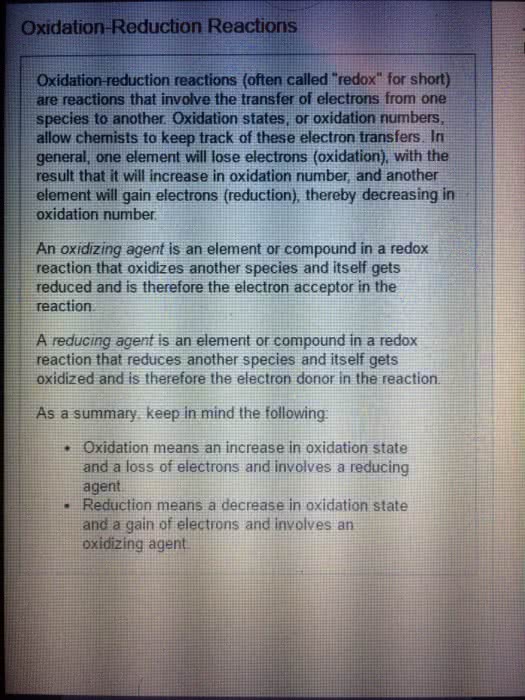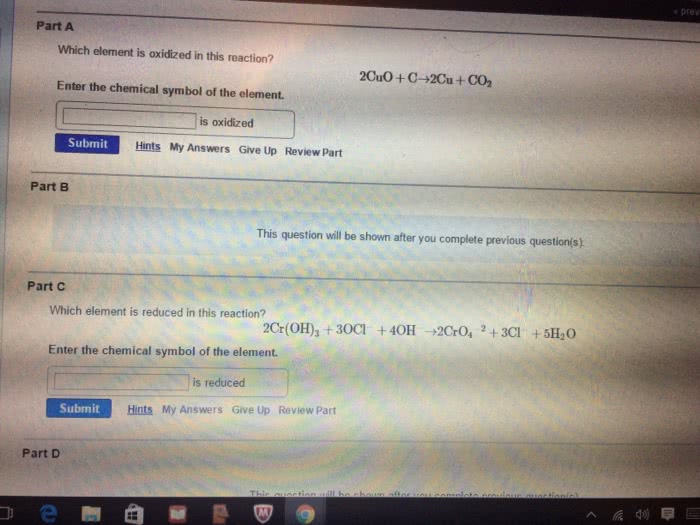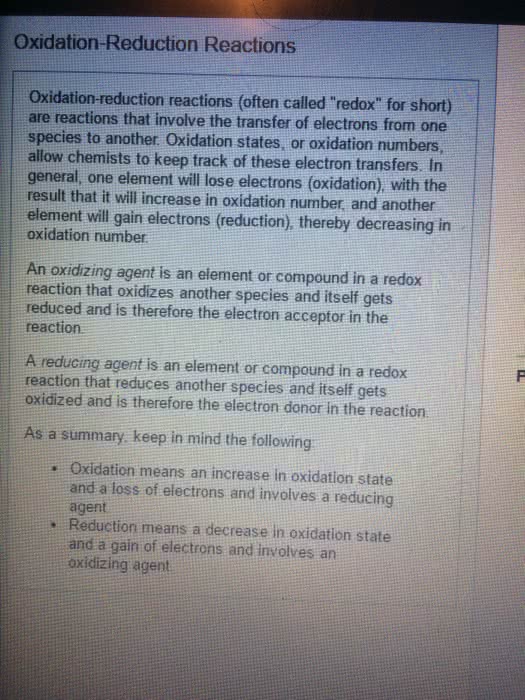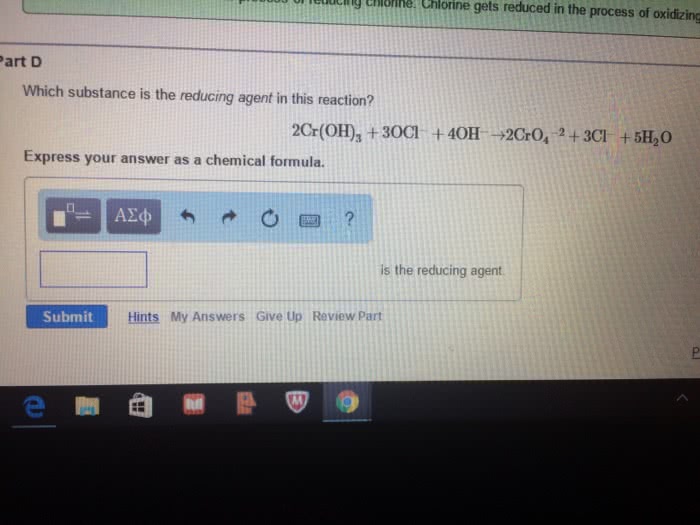CHEM 1312 Lecture Notes - Lecture 10: Walther Nernst, Nernst Equation, Michael Faraday

Chapter 18: Electrochemistry
Oxidation-Reduction Reactions: REVIEW (chapter 4)
• Often called “redox” reactions
• involve transfer of e– between reactants
= Oxidation numbers change
• oxidation = loss of e–
reduction = gain of e–
-- both reactions must occur together
• species that accepts e– oxidizing agent (gets reduced)
species that donates e– reducing agent (gets oxidized)
• redox reaction occurs because different elements have
different tendencies to gain or lose e–
Zn(s) + CuSO4(aq) → ZnSO4(aq) + Cu(s)
Net ionic:
Zn(s) + Cu2+(aq) → Zn2+(aq) + Cu(s)
Species oxidized: __________
Species reduced: __________
Oxidizing agent: __________
Reducing agent: __________
Half reactions:

Oxidation Numbers: (oxidation state) charge on an atom if
e– were transferred completely
-- another “bookkeeping” method that allows us to keep
track of electrons
Balancing Simple Redox Reactions: half-reaction method
• in a redox reaction, you must balance both the mass AND
the charge
• Consider this net ionic reaction:
Al(s) + Ni2+(aq) → Al3+(aq) + Ni(s)
= balanced by mass, but not by charge
1. Divide reaction into 2 half-reactions: add e– to each to
balance charge
Al(s) → Al3+(aq)
Ni2+(aq) → Ni(s)
2. Multiply each by a common factor to equalize e– in each
reaction:
= number of e– lost must equal number of e– gained
2 [Al(s) → Al3+(aq) + 3 e− ]
3 [Ni2+(aq) + 2 e− → Ni(s) ]
3. Cancel e– and write balanced net ionic reaction:
2 Al(s) → 2 Al3+(aq) + 6 e−
3 Ni2+(aq) + 6 e− → 3 Ni(s)
------------------------------------------------------
2 Al(s) + 3 Ni2+(aq) → 2 Al3+(aq) + 3 Ni(s)
Balancing Redox Reactions involving H and O:
• will typically be told reaction occurs under acidic or basic
conditions
-- use H2O to balance oxygen
-- use H+ to balance hydrogen
• Balance the following rxn (acidic conditions):
Cr2O7
2– + Fe2+ → Cr3+ + Fe3+
1. Half reactions:
Cr2O7
2– → Cr3+
Fe2+ → Fe3+
2. Balance 1st by mass (everything EXCEPT O and H):
Cr2O7
2– → 2 Cr3+
Fe2+ → Fe3+
3. Balance O using H2O:
Cr2O7
2– → 2 Cr3+ + 7 H2O
Fe2+ → Fe3+
4. Balance H using H+:
14 H+ + Cr2O7
2– → 2 Cr3+ + 7 H2O
Fe2+ → Fe3+
5. Balance charge using e–:
6 e– + 14 H+ + Cr2O7
2– → 2 Cr3+ + 7 H2O
Fe2+ → Fe3+ + e–
Document Summary
Oxidation-reduction reactions: review (chapter 4: often called redox reactions, involve transfer of e between reactants. Oxidation numbers: (oxidation state) charge on an atom if e were transferred completely. - another bookkeeping method that allows us to keep track of electrons. Balancing simple redox reactions: half-reaction method: in a redox reaction, you must balance both the mass and the charge, consider this net ionic reaction: = balanced by mass, but not by charge: divide reaction into 2 half-reactions: add e to each to balance charge. Ni2+(aq) ni(s: multiply each by a common factor to equalize e in each reaction: = number of e lost must equal number of e gained. Ni(s) : cancel e and write balanced net ionic reaction: 2 al(s) 2 al3+(aq) + 6 e . 2 al(s) + 3 ni2+(aq) 2 al3+(aq) + 3 ni(s) Balancing redox reactions involving h and o: will typically be told reaction occurs under acidic or basic conditions.





